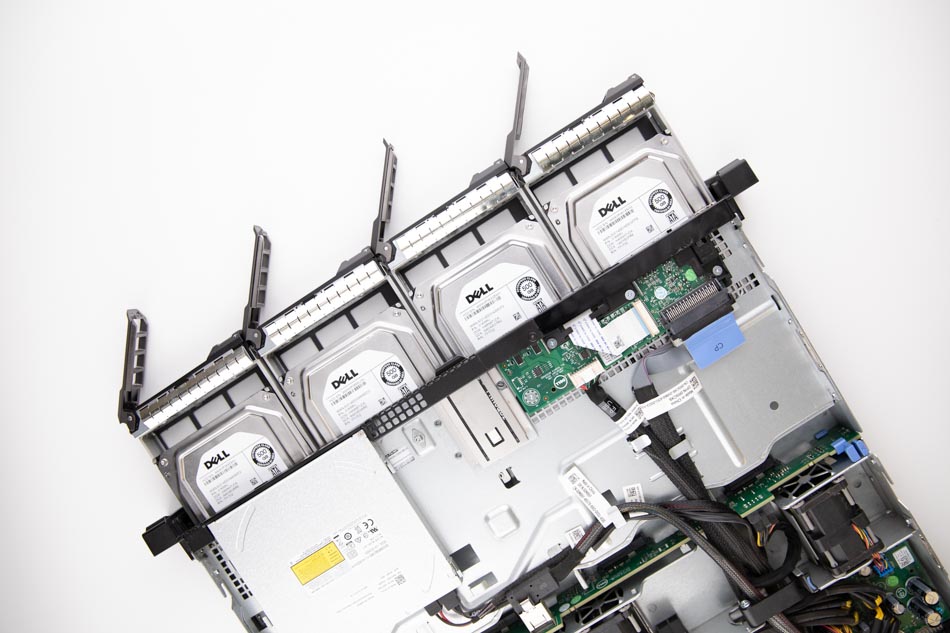Server data loss can have serious consequences for any organization, and it is important to take steps to prevent and recover from data loss. The results of server data loss can include increased downtime, decreased productivity, lost business opportunities, and damaged reputation. In the most severe cases, server data loss can result in financial losses and legal penalties.
Causes of Data Loss on Servers
Experiencing data loss on servers can have severe consequences, including downtime, financial setbacks, and potential harm to one’s reputation. It is crucial to comprehend the diverse factors that can lead to data loss and take proactive measures to prevent such incidents. Here are several typical causes that can contribute to data loss on servers.
1
Human Error
One of the primary causes of server data loss is human error. This can include accidental deletion of files, misconfiguration of the file system, and failure to follow proper data protection procedures. To minimize the risk of human error, it is important to provide regular training for staff on the appropriate handling and protection of data and implement strict data security policies.
2
Hardware Failure
Another common cause of server data loss is hardware failure. This can result from a power surge, overheating, or mechanical failure.
In order to prevent hardware failure from leading to data loss, it is important to use high-quality, reliable storage devices and to keep these devices in a dust-free environment.

It is also essential to regularly perform maintenance checks and replace hardware components showing signs of wear and tear.
3
Malware and Ransomware Attacks
Malicious software, such as ransomware, can encrypt or erase server data. Specifically, ransomware attacks can demand payment in exchange for decrypting data, making recovery more challenging.
4
Power Outages and Surges
Power outages or surges can occur unexpectedly, causing server shutdowns or data corruption. In order to prevent these problems, it is crucial for servers to possess backup power sources such as uninterruptible power supplies (UPS).
Natural disasters can also lead to server data loss, and it is important to have a disaster recovery plan in place to ensure that you are prepared in the event of a data loss. This plan should include steps to minimize data loss, such as regularly backing up your data, and steps to recover lost data, such as accessing backup data or contacting a data recovery service.
How to Prevent Server Data Loss
- Review and update data security measures. It is important to review and update the data security measures to prevent data loss incidents. This may include implementing stronger passwords, implementing access controls, and increasing data encryption.
- Train employees. Training employees on best practices for data security can help reduce the risk of data loss due to human error. This can include regular training on proper data handling, storage, and deletion procedures.
- Regularly update software. Periodically updating anti-virus software and other security software can help prevent data breaches and loss due to malware or other malicious software.
- Utilize RAID configurations to provide fault tolerance and data redundancy. RAID levels such as RAID 1 and RAID 5 provide a safeguard against disk failures.
- Ensure that urgent data backups are stored offsite in secure areas to protect against physical disasters that could affect your primary data center.
- Maintain the server room or data center conditions within specified temperature and humidity ranges to prevent hardware failures due to environmental factors.
It is also essential to regularly back up your data and to store these backups in a secure location. This measure can help ensure you have access to your data even if the data recovery process is unsuccessful. There are several backup and recovery solutions available, including traditional backup methods, such as tape backups, and more modern solutions, such as cloud backups and machine learning-based data protection.
What to Do When Facing a Data Loss on a Server
Server data loss can have serious consequences for any organization, and it is important to take steps to recover easily from data loss. These steps can include implementing data loss prevention software, regularly backing up data, and having a disaster recovery plan. By taking these precautions, you can minimize the impact of server data loss and increase the chances of successful data recovery.
- Stop all activity on the server. In order to avoid making the situation worse, it is important to stop all activity on the server as soon as possible. This will prevent any further data loss or corruption.
- Evaluate the cause of the data loss. This could be due to hardware failure, human error, or a data breach. Understanding the cause of the data loss can help prevent similar incidents from occurring.

3. Back up the lost data. It is important to back up any remaining data on the server. This will ensure that if the data recovery process is not successful, the lost data can still be recovered from the backup.
4. Contact a data recovery service. If the data loss is significant, it is necessary to bring in a professional data recovery service. These services specialize in retrieving lost data and can often recover data that would otherwise be lost permanently.
Server data loss can have significant consequences for an organization. However, by taking proactive measures to prevent data loss and having a plan in place for how to respond in the event of a data loss, organizations can minimize the consequences of a data loss incident and increase the chances of successful data recovery.
If you are facing a data loss situation on your server, do not hesitate to contact us. We will gladly help you recover data from your server regardless of the reason for file inaccessibility.
Frequently Asked Questions
What is server downtime?
Server downtime refers to the period of time when a server or a network service is not accessible or functioning properly. It can occur due to various reasons, such as hardware or software failures, network issues, power outages, or scheduled maintenance.
Why does server downtime happen?
Server downtime can happen for several reasons, including hardware failures (such as disk or memory failures), software glitches or bugs, cyber attacks, natural disasters (like earthquakes or floods), power outages, network failures, or scheduled maintenance to perform updates or upgrades.
How does server downtime affect businesses?
Server downtime can have significant negative impacts on businesses. It can disrupt normal operations, leading to loss of productivity, missed deadlines, dissatisfied customers, and potential revenue loss. Downtime may also result in data loss or corruption, affecting business continuity and reputation.
What is data loss?
Data loss refers to the situation where important or valuable data becomes inaccessible, corrupted, or permanently deleted. It can occur due to various reasons, including hardware or software failures, human error, cyber attacks, natural disasters, or malware infections.
How can businesses minimize server downtime?
To minimize server downtime, businesses can implement several measures, including redundant hardware and power supplies, regular system maintenance, monitoring tools to detect and resolve issues proactively, implementing backup and disaster recovery plans, and having a skilled IT team or partnering with a reliable managed service provider.
What should I do if I experience server downtime or data loss?
If you experience server downtime or data loss, it’s important to remain calm and follow a predetermined plan. Contact your IT department or service provider immediately to report the issue. If you have a backup or disaster recovery plan in place, follow the steps outlined in that plan to restore operations and data. If necessary, consult with IT professionals or data recovery experts to assist in the recovery process.
Is it possible to completely eliminate server downtime and data loss?
While it is not possible to completely eliminate server downtime and data loss risks, businesses can take proactive measures to minimize their occurrence and mitigate the impact. By implementing redundant systems, robust backup strategies, and comprehensive disaster recovery plans, the risk can be significantly reduced, ensuring business continuity and data integrity.
